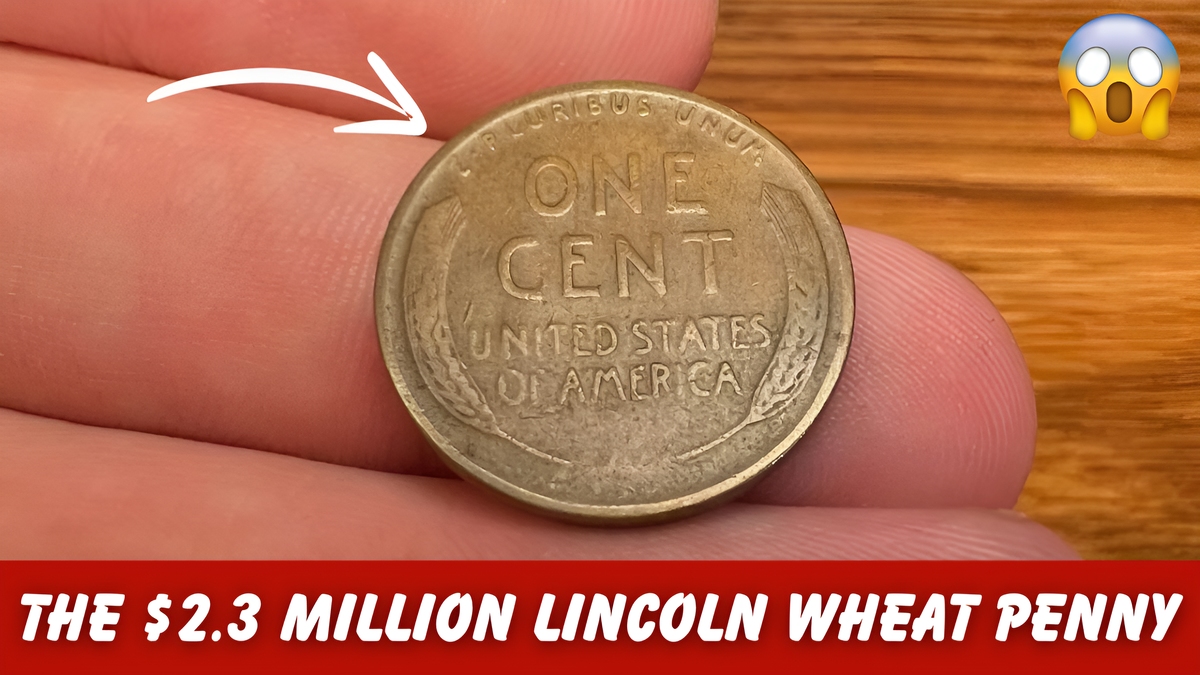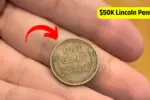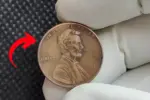Imagine the thrill of discovering a single penny worth $2.3 million! For avid coin collectors and casual enthusiasts alike, the story of the Lincoln Wheat Penny continues to captivate attention. This tiny treasure, once an everyday coin, has gained legendary status due to its extraordinary value, rarity, and historical significance. Is it possible that one of these rare pennies is still out there, mingling with the loose change in your pocket? Let’s uncover the fascinating tale of the $2.3 million Lincoln Wheat Penny and what makes it so valuable.
A Brief History of the Lincoln Wheat Penny
The Lincoln Wheat Penny, minted between 1909 and 1958, is one of the most iconic coins in U.S. history. Its debut in 1909 marked the centennial of Abraham Lincoln’s birth and the first time a U.S. president’s portrait appeared on a coin. Designed by Victor David Brenner, the obverse features Lincoln’s profile, while the reverse side showcases two wheat stalks framing the words “ONE CENT.” These symbols represented growth, prosperity, and national pride.
Billions of Lincoln Wheat Pennies were produced, making them a staple of American currency during their era. While most of these coins are worth only their face value today, certain rare variations stand out, like the elusive 1943 bronze penny a coin so rare and sought-after that one example sold for $2.3 million at auction.
Why the 1943 Bronze Penny Is So Rare
To understand the rarity of the 1943 bronze penny, we need to delve into the circumstances of its creation. During World War II, copper was in high demand for military use, particularly in the production of ammunition and communication equipment. To conserve copper, the U.S. Mint temporarily switched to producing pennies made from steel coated with zinc in 1943. These “steel cents” replaced traditional copper pennies for that year.
However, a small number of 1943 pennies were mistakenly struck on leftover bronze planchets, the metal disks used for earlier pennies. This error resulted in a tiny batch of 1943 bronze pennies being minted so few, in fact, that only about a dozen are known to exist today. The rarity and historical context of these coins have made them incredibly valuable, with one fetching $2.3 million at auction.
What Makes the $2.3 Million Penny So Valuable?
The staggering value of the 1943 bronze Lincoln Wheat Penny stems from a combination of factors:
- Rarity: With fewer than 20 examples believed to exist, the 1943 bronze penny is one of the rarest U.S. coins.
- Error: Coins produced in error often intrigue collectors, as they represent anomalies in the minting process.
- Historical Context: The penny’s connection to World War II adds to its allure, symbolizing a unique period in American history.
- Condition: The coin’s grade, determined by its physical condition, significantly influences its value. High-grade specimens can command millions of dollars.
- Demand: The combination of rarity, error, and historical significance has made the 1943 bronze penny highly sought-after among collectors.
Still in Circulation? The Possibility of Discovery
The idea that one of these rare pennies could still be out there, waiting to be found, is tantalizing. While most known examples have been authenticated and are held by private collectors or institutions, a few 1943 bronze pennies remain unaccounted for. This means there’s a slim but real chance that one could still be discovered in circulation, perhaps hiding in a jar of old coins, a flea market, or an inherited collection.
Stories of unexpected discoveries fuel hope among treasure hunters. For example, in the 1980s, a Massachusetts teenager found a 1943 bronze penny in his pocket change, later selling it for thousands of dollars. Could such a discovery happen again? The possibility keeps collectors and hobbyists searching.
How to Identify a 1943 Bronze Penny
If you’re intrigued by the prospect of finding a $2.3 million penny, here’s how to identify one:
- Check the Date: The coin should bear the year “1943.”
- Material Test: Bronze pennies are made of 95% copper and 5% tin and zinc. Use a magnet if the coin sticks, it’s a steel cent, not bronze.
- Weight: A bronze penny weighs about 3.11 grams, while a steel cent is lighter at 2.7 grams. Use a precise scale to measure the weight.
- Visual Inspection: Bronze pennies have a coppery-brown hue, while steel cents are silver in color.
- Professional Authentication: If you believe you’ve found a 1943 bronze penny, consult a professional coin grader or numismatist to verify its authenticity.
The Thrill of the Hunt
For many collectors, the search for rare coins like the 1943 bronze Lincoln Wheat Penny is a passion that combines history, artistry, and adventure. Even if you don’t find the elusive $2.3 million penny, coin collecting can be a rewarding hobby. Many other Lincoln Wheat Pennies, including those from rare years or with minting errors, can also be valuable.
Beyond monetary value, coins tell stories. They offer a glimpse into the past, reflecting the culture, economy, and events of their time. For example, the switch to steel pennies during World War II symbolizes the nation’s resourcefulness and sacrifices during a time of crisis.
Getting Started with Coin Collecting
If you’re inspired to explore coin collecting, here are some tips to help you get started:
- Start Small: Examine your pocket change and coin jars for interesting finds. Look for Wheat Pennies, silver coins, or coins with unusual designs.
- Learn the Basics: Familiarize yourself with key terms like mintage, grade, and planchet. Invest in books or online resources to deepen your knowledge.
- Invest in Tools: Basic tools like a magnifying glass, coin holder, and scale can enhance your collecting experience.
- Join a Community: Connect with fellow collectors through local coin clubs or online forums. Sharing knowledge and experiences can be invaluable.
- Be Patient: Building a collection takes time, but the joy of discovery makes it worthwhile.
Conclusion
The $2.3 million Lincoln Wheat Penny is a symbol of the unexpected treasures that can hide in plain sight. Its rarity, historical significance, and legendary status make it a fascinating piece of American history. Whether you’re a seasoned numismatist or a curious newcomer, the possibility of finding such a coin adds excitement to the search.
So, the next time you sift through your spare change or stumble upon a box of old coins, take a closer look. That unassuming penny might just be the find of a lifetime one that turns your pocket change into a small fortune.
FAQs
Q1: What is the 1943 bronze Lincoln Wheat Penny?
It is an extremely rare error coin accidentally struck on bronze during World War II.
Q2: Why is the 1943 bronze penny worth $2.3 million?
Its rarity, historical context, minting error, and collector demand drive its value.
Q3: How can I identify a real 1943 bronze penny?
Check the date, test if it sticks to a magnet, and verify its weight and color.
Q4: Are there still undiscovered 1943 bronze pennies?
Yes, a few may still be hidden in private collections or old coin jars.
Q5: Can a beginner start coin collecting easily?
Yes, starting with basic tools, learning key terms, and joining a community makes it fun and simple.



